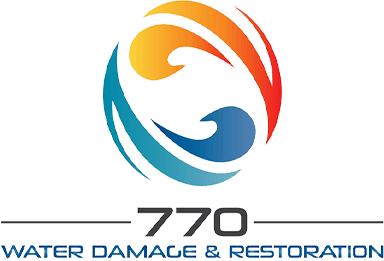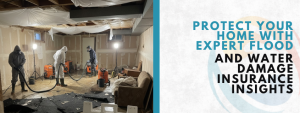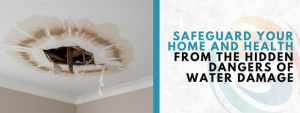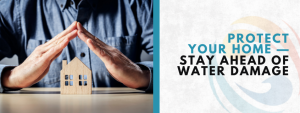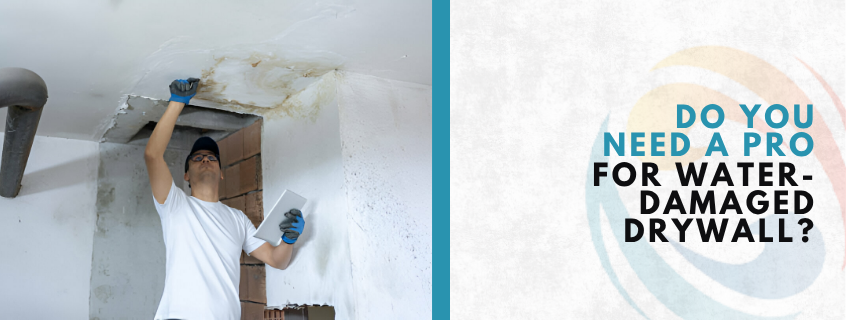
Water-damaged drywall doesn’t scream for attention. It sneaks in slowly, quietly. And by the time it’s noticed, the real damage is already underway. In Los Angeles, where plumbing leaks, roof issues, and humidity can strike at any time, water-damaged drywall rarely makes itself obvious right away. Acting quickly is key to avoiding costly repairs and health risks.. It creeps in slowly, often hidden, and by the time it’s noticed, the damage is already underway. That leaves many homeowners wondering: Should a professional be called for water damage repair, or is a simple patch job enough?
It’s a common question—one searched by thousands every day. If straightforward, practical answers are what’s needed, this guide will break it down clearly.
What Water-Damaged Drywall Looks Like
The drywall isn’t made to be wet. It’s a sandwich of gypsum powder between two layers of paper. When water touches it, the gypsum absorbs it like a sponge. That’s when the trouble starts. In Los Angeles, where leaks, storms, and plumbing issues are common, this absorption can quickly lead to sagging walls, mold growth, and costly repairs if not addressed quickly.
Here’s how to spot water damage in drywall:
- Soft Spots: Press gently. If it feels mushy or gives way, that’s a red flag.
- Stains and Discoloration: Yellow or brown stains that spread out in rings.
- Bubbling Paint or Peeling Wallpaper: These often show up before the drywall shows physical damage.
- Musty Smell: If your wall smells like an old basement, it could be damp inside.
- Cracks or Sagging: Waterlogged drywall might warp or even collapse.
Now, does every water spot mean you need drywall water damage repair? Not necessarily. But if more than one of these signs shows up, it’s time to dig deeper.
What Causes Water-Damaged Drywall in the First Place?
Drywall is highly porous, making it especially vulnerable to water damage. Plumbing leaks—from burst pipes, loose fittings, or hidden drips behind walls—are a leading cause. Roof leaks during storms or from damaged shingles can also allow moisture to seep in. Flooding from heavy rain, poor drainage, or foundation cracks introduces water that quickly saturates drywall. Even minor problems, like condensation from high humidity or appliance leaks, can gradually weaken the surface. Over time, damp drywall softens, warps, and creates an environment for mold growth. Prompt drywall water damage repair in Los Angeles is crucial to prevent further structural deterioration and protect your home’s air quality. Addressing the source of moisture early helps avoid expensive repairs and long-term health risks.
What Happens If You Don’t Fix Water-Damaged Drywall?
Here’s the short answer: nothing good. Ignoring wet drywall is like ignoring a cavity—it only gets worse. Here’s what can happen over time:
- Mold Growth: It starts within 24–48 hours of moisture exposure.
- Structural Weakness: Drywall loses strength and becomes crumbly.
- Bad Odors: That damp, musty smell sticks around.
- Worsening Damage: What starts in one spot can spread across multiple panels.
- Higher Repair Costs: What might have been a simple patch could require a full replacement.
According to industry professionals, mold inside drywall is one of the top reasons people call for drywall water damage repair. It’s not just ugly—it can cause respiratory problems and trigger allergies, especially in kids or the elderly.
When Can You Fix Water-Damaged Drywall Yourself?
Not every water spot needs a contractor. There are times when a DIY approach works just fine. Here’s when:
- The Area Is Small (Less Than 6 Inches): If it’s smaller than a dinner plate, you might patch it yourself.
- It’s Completely Dry: Use a moisture meter to double-check.
- There’s No Mold or Smell: If you spot mold, leave it to the pros.
DIY Drywall Repair Checklist:
- Cut out the damaged section using a drywall saw.
- Remove all surrounding wet or crumbling materials.
- Install a new drywall patch.
- Tape, mud, sand, and paint.
You’ll need the right tools: a utility knife, a drywall patch, joint compound, sanding block, and paint. But even if you’ve got everything, keep in mind that a smooth, clean finish is harder than it looks.
What Pros Do During Drywall Water Damage Repair
If you’ve never seen a pro handle damaged drywall, you might think they just cut and replace. But in Los Angeles, the process is a bit more complex—and that’s a good thing. Local specialists don’t just fix the visible damage; they inspect for hidden moisture, prevent mold growth, and ensure the repair blends seamlessly with your walls.
Here’s what a full professional repair process usually includes:
- Moisture Reading: Checking moisture levels inside walls and insulation.
- Leak Source Identification: Stopping the water before repairing.
- Containment: Setting up plastic sheeting to prevent dust and spores from spreading.
- Drying and Dehumidifying: Industrial fans and dryers to remove every drop.
- Demo and Removal: Cutting out all damaged drywall, not just what’s visible.
- Mold Remediation (if needed): Treat studs and insulation before new drywall goes up.
- Drywall Replacement: Installing, taping, and sanding for a seamless finish.
- Paint and Texture Matching: Making sure the new wall looks like it was never touched.
Professionals also follow safety protocols that most DIYers skip—like wearing respirators, using HEPA vacuums, and disposing of contaminated materials safely.
How Much Does Drywall Water Damage Repair Cost?
Cost depends on several things, like:
- Size of the Damaged Area
- Presence of Mold
- Ease of Access
- Material Costs in Your Area
- Labor Rates
Here’s a general price table to help:
| Damage Size | DIY Cost Estimate | Professional Cost Estimate |
| Small Patch (<1 sq ft) | $20–$50 | $150–$300 |
| Medium (1–5 sq ft) | $50–$100 | $300–$800 |
| Large Area (>5 sq ft) | Not Recommended | $800–$2,500+ |
| Mold Remediation | N/A | $1,000–$5,000+ |
Keep in mind, a quick fix now might avoid a giant bill later. And insurance often covers water-related drywall repairs—especially if caused by a covered event.
Can You Prevent Drywall Water Damage in the Future?
Drywall Protection Checklist:
- Check your roof after every storm.
- Insulate pipes to prevent freezing and bursts.
- Clean out gutters regularly to prevent water backup.
- Install moisture barriers in crawl spaces and basements.
- Use dehumidifiers in high-humidity rooms.
- Don’t ignore musty smells—they’re usually a sign of hidden moisture.
And here’s something most people miss: get your plumbing inspected once a year. Hidden leaks are a top cause of slow, sneaky drywall damage.
Why Choosing the Right Help Matters
When water damage strikes, the right help can make all the difference between a quick recovery and lasting problems. Professional services like Water Damage Restoration Los Angeles offer expertise, advanced equipment, and proven methods to remove excess water, dry affected areas, and prevent mold before it spreads. Attempting repairs on your own may overlook hidden moisture, which can lead to structural issues and health risks later. Specialists also handle drywall water damage repair, ensuring weakened or contaminated drywall is safely replaced or restored. Choosing qualified professionals not only protects your home’s value but also saves time and money by preventing costly future damage. Reliable restoration gives peace of mind, knowing your home is safe, clean, and fully repaired..
Frequently Asked Questions About Drywall Water Damage Repair
How to know if drywall has water damage?
Check for soft spots, discoloration, bubbling paint, or a musty odor. Press gently—if the wall feels mushy or weak, moisture is likely inside. Expanding water stains are another warning sign.
Can water-damaged drywall be fixed without a professional?
Small, dry damage under six inches without mold can sometimes be repaired with basic tools. Larger areas, musty odors, or widespread softness should be handled by a professional to ensure the problem behind the wall is addressed.
What happens if drywall water damage is ignored?
Delaying repairs often leads to mold growth, structural deterioration, foul odors, and higher costs. Untreated drywall can sag, crumble, or create health hazards from hidden mold.
How much does drywall water damage repair usually cost?
DIY repairs may cost $20–$100 for small patches. Professional services typically range from $150 to $2,500, depending on damage size and whether mold removal is required. Insurance may cover sudden, accidental incidents.
What should be done first when drywall water damage is noticed?
Stop the water source immediately—whether from plumbing, roofing, or appliances. Assess the damage. Small, dry areas may be manageable with DIY fixes, but larger or suspicious damage should be handled by a professional to prevent hidden problems.
